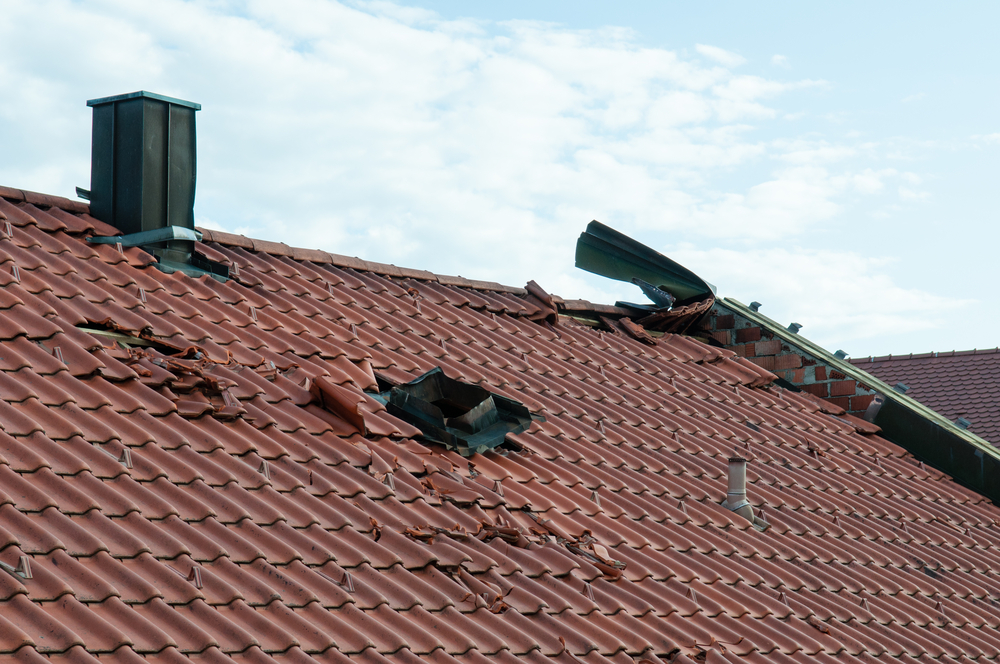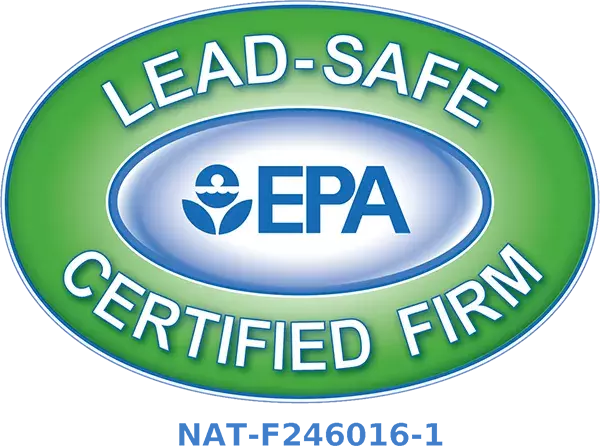Your house may very well have encountered its share of stormy weather over the years. From hailstorms to tornadoes, storms, roof damage can be one of the biggest enemies of your house – and your roof can easily be the most vulnerable part. While homeowners like yourself can’t avoid the hail damage, you can help your roof in its recovery. Dive into the blog to discover different types of storm damage, how you can identify any signs of post-storm roof damage, and how you can get your roof back in shape.
Signs Your Roof is Damaged After a Storm
Knowing the extent of damage can help you decide between a storm damage roof replacement and roof repairs. While some roof damages are apparent, others might need an expert eye or closer inspection. Here are five clear signs of roof damage.
1. Damaged Gutters
Damaged gutters demand immediate fixing. If neglected, water can seep into the foot of your house, attacking the foundation. If the gutters have trapped shiny granules, it may point to the erosion of your shingles.
2. Scratches/Dents Around the Roof
Examine your roof from the ground and look for any damages around the protruding features of the roof. Examine the bottom area of the chimney and the roof shingles surrounding it. Lastly, look for any screws or nails that may have come loose.
3. Issues with Shingles
Try to find shingles that are either missing, curled, or cracked. Damaged roof shingles would mean it has sustained structural damage and may not be able to withstand more rain or storm. A missing shingle might trigger a leak.
4. Damages/Moisture Associated with the Attic
A change in rafters – structural members made of wood that support the roof – can often tell the tale of post-storm or wind damage. If your roof is intact, inspect your attic. If the rafters look wet or warped, it might indicate severe damage. If your attic is exposed to the air outside, it might project a clammy or damp feeling inside. This, again, would indicate damage that needs examining.
5. Stained Walls or Ceilings
If your walls or ceilings have yellow or dark stains, it means the leaks have already penetrated the structural integrity of your house. Examine the corners of the walls and ceiling surfaces – especially on the upper stories of your house – to avoid the leaks from spreading any further.
How to Inspect Your Roof and Hunt for Damages
Now that you’re familiar with the signs of storm damage to your roof, it’s time to start hunting for it.
- Walk around the perimeter of your house and take note of any visible signs of damage. View parts of the roof from your window and take pictures of any documentable damage, including curled, torn, dented, or missing shingles.
- Gutters, roof overhangs, gable vents, and other roofing accessories – examine them all for signs such as torn screens, broken glass, cracks, or loose weather-stripping.
- Note any signs of leaks or spots (however minor) in your attic, light fixtures, ceiling, and walls.
- Check your home’s exterior to find missing fence posts, damaged tree limbs, and damaged lawn furniture. If the storm has damaged your roof, chances are it has also damaged other flat surfaces like patios and decks.
The Storm has Passed – What About the Damages?
Your roof might not be so lucky as to breathe a sigh of relief after the storm passes. However, you can seek professional roof damage repair to restore your roof to its pristine condition. The key is to check the entire area soon after a storm or hail, inspect and document all damages, and get professionals like J&R Restoration on your side.
From offering permanent roof repairs (you’ll forget your roof was damaged in the first place) to safeguarding your family and your home from upcoming storms with a tailor-made roof tarp, J&R Restoration can – literally – shield you against storms.


